EX RARE Antique Stefan Von Gotz & Sohne Vertical Height Sundial Clock, c1850
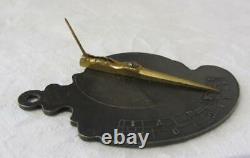
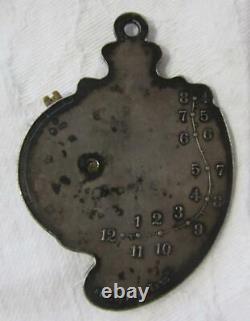
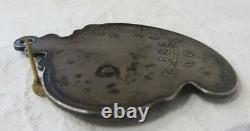
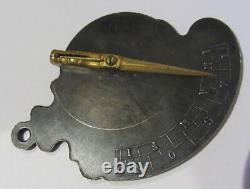


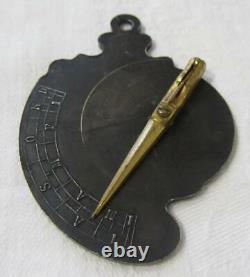
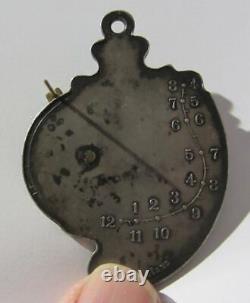

EX RARE Antique Stefan Von Gotz & Sohne Vertical Height Sundial Clock, c1850. Vertical height clock Stefan von Götz & Söhne, Vienna, c. This clock in the form of a suspended plate of irregular shape, measuring approx.
4.5cm x 6.3cm, designed for a latitude of approx. On one side of the dial there is a brass, rotating indicator and calendar scale. Within the indicator there is a compartment for storing a folding gnomon.
Gnomon in the form of a short wire rod. On the other side, an analymatic time scale curve, in which the full hours are described in Arabic numerals and marked with a dot, and the half-hour intervals with a dash. Below the time scale signature: ST.
To determine the time using the presented clock, it is necessary to set the appropriate date on the calendar scale using a rotating indicator and expose the gnomon rod by setting it perpendicular to the clock face. Then hang the clock freely by setting it parallel to the incidence of sunlight. Then the shadow cast by the gnomon will indicate the time.Similar objects to the presented clock, also by other artists, can be found in several foreign collections: the Adler Planetarium Museum in Chicago, signed GÖTZ inv. W-50, Museum of the History of Science in Oxford, signed F.
Also in the Polish collection of the Przypkowski Museum in Jedrzejów there are three copies of clocks of this type, signed: F. ZAPPECK, GÖTZ & SÖHNE and signed with initials and dated to 1785. An interesting fact is that this type of clock was on a commemorative medal minted on the occasion of the organization of the International Congress of the History of Science, in Jedrzejów in 1965.
We strive very hard to offer a fast and efficient service at all times. After all, a happy customer is potentially a returning customer. We will send you a combined invoice when you are finished purchasing.However if you need more information on an item please request more specific details or photographs. This item is in the category "Antiques\Science/Medicine\Scientific Instruments".
The seller is "smr1290132" and is located in this country: GB. This item can be shipped worldwide.- Antique: Yes
- Material: Metal
- Period: 1800 to 1900
- Type: Sundial/Clock

